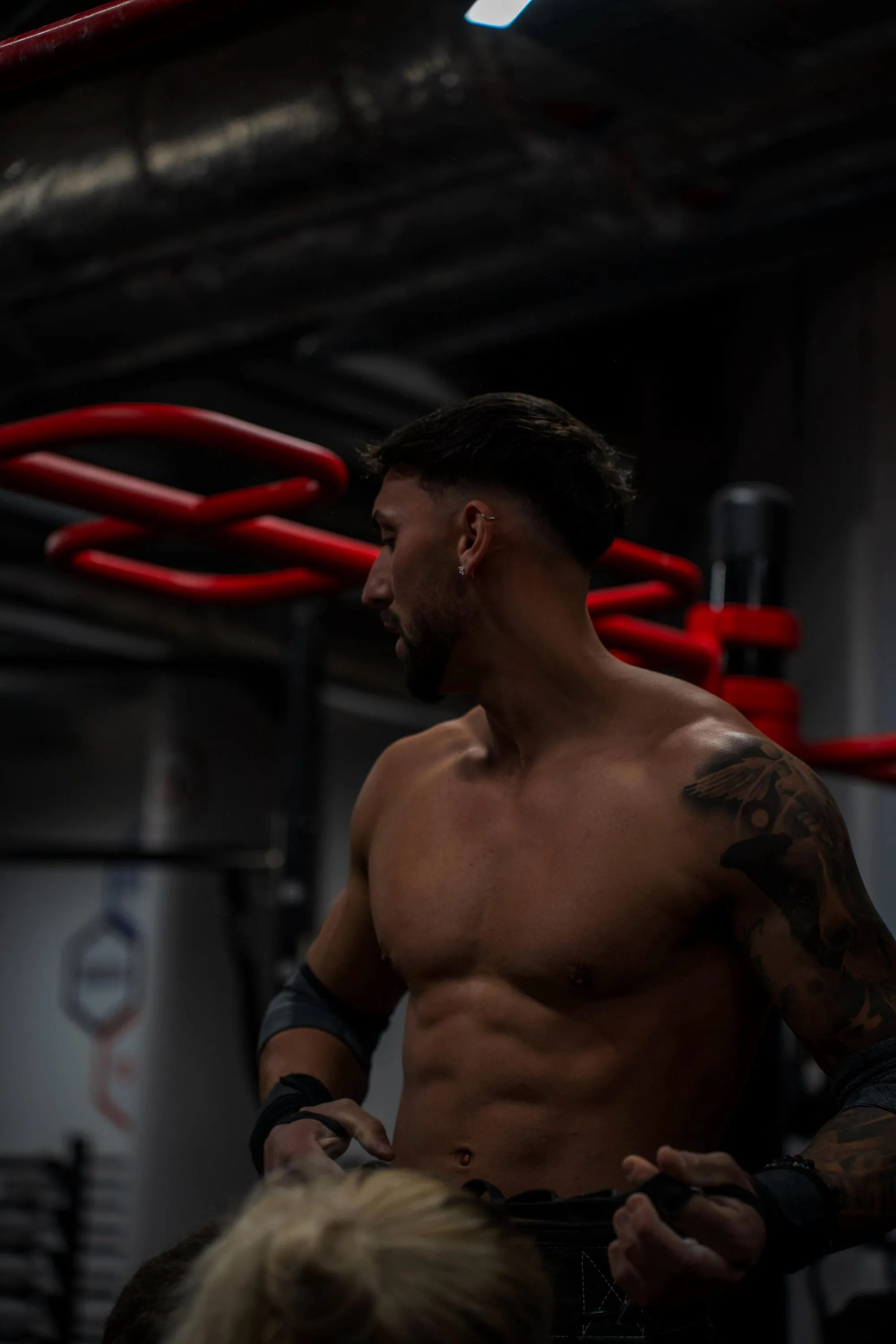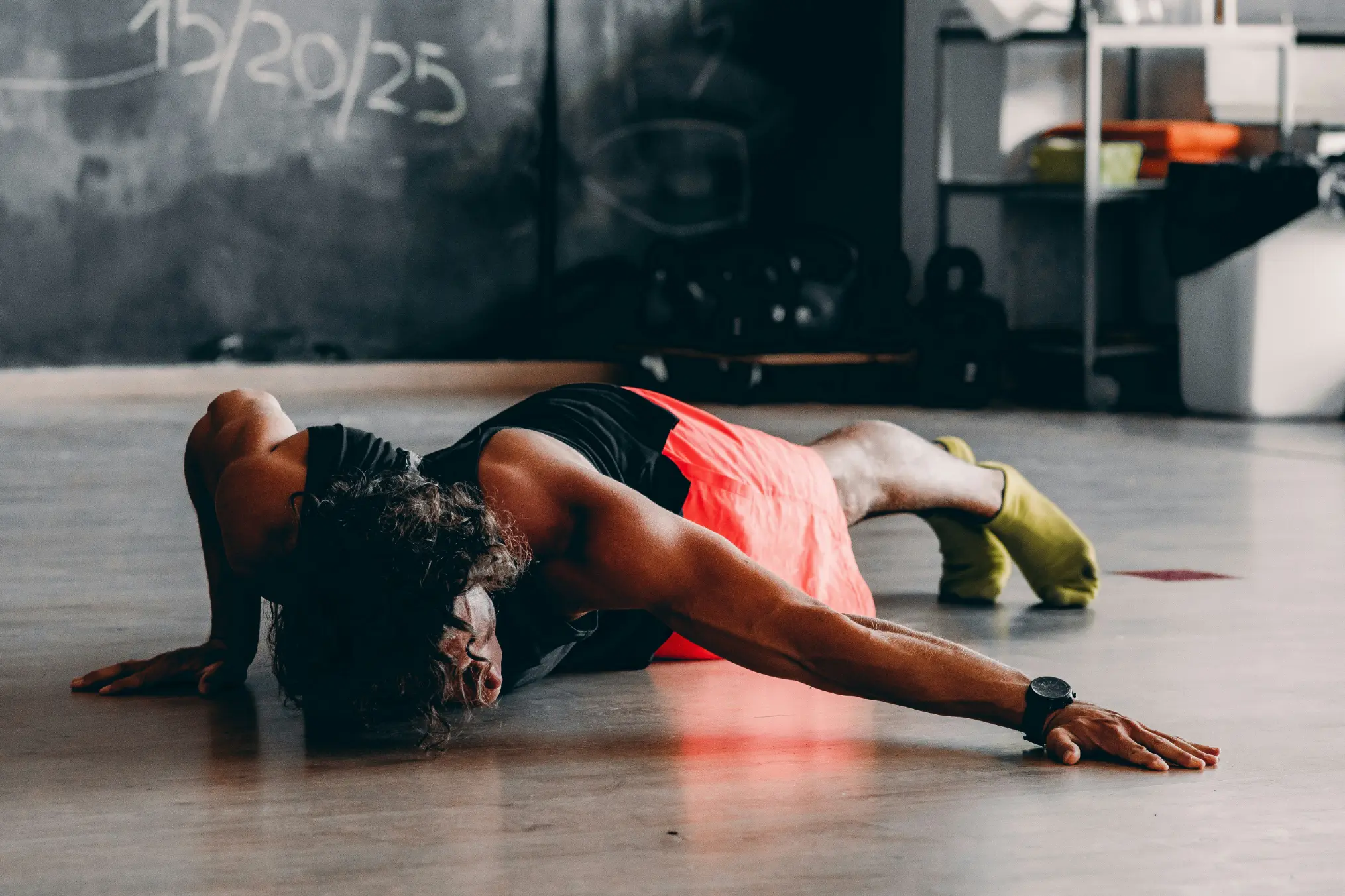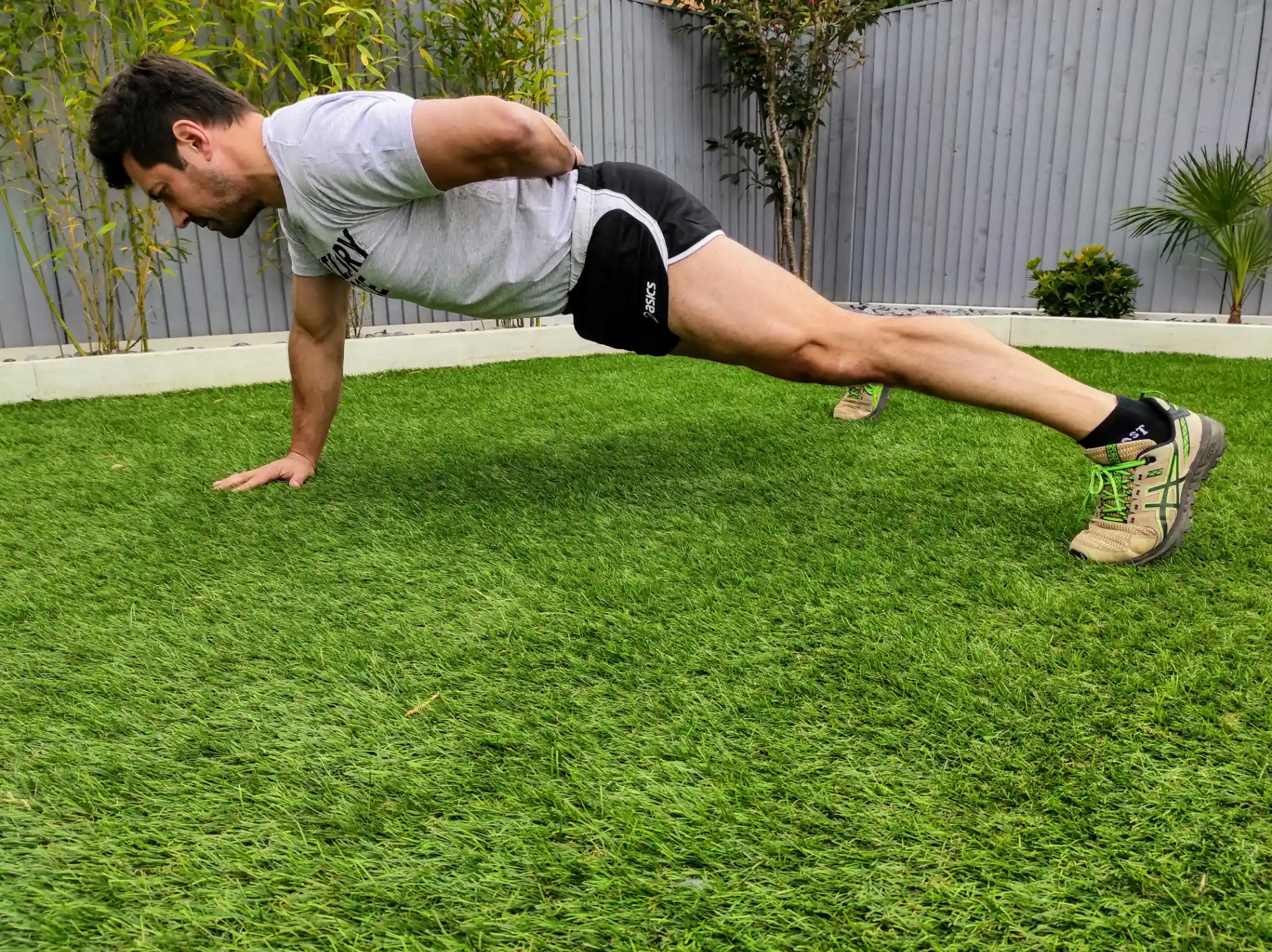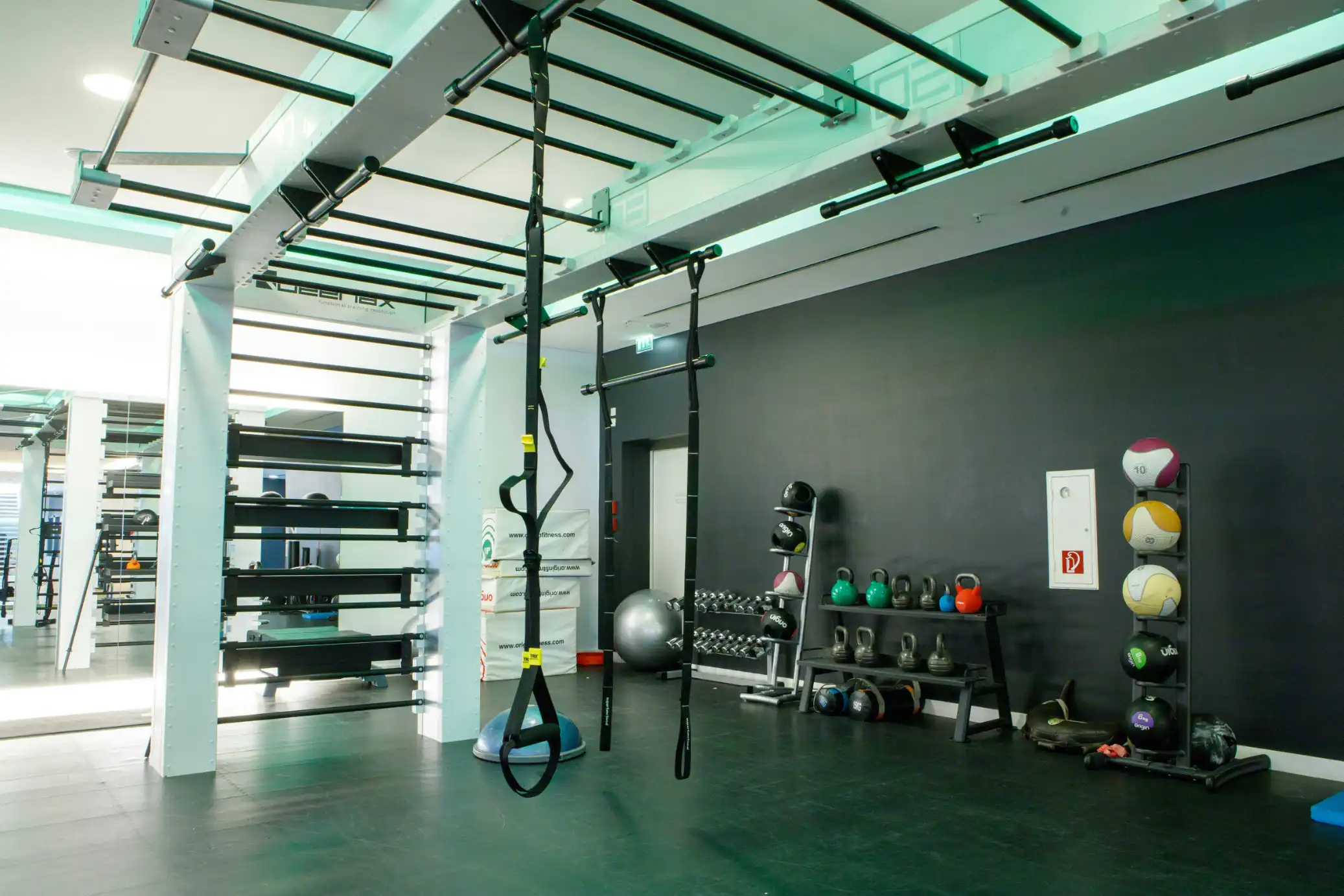
How to Get Into Calisthenics (Even If You’re Starting from Scratch)
Workouts
How to Get Into Calisthenics (Even If You’re Starting from Scratch)
Thinking about trying calisthenics? This beginner’s guide by UK calisthenics coach Ed Rocha shows you how to get started with bodyweight training the right way, from core exercises and workouts to when you should hire a coach.

July 22, 2025

What Is Calisthenics and Why Should You Care?
Calisthenics is all about using your own bodyweight as resistance. Think push-ups, pull-ups, squats, and planks, but also advanced moves like the human flag and handstand push-ups.
It’s one of the most accessible forms of training out there. You can do it at the park, at home, or in a gym, and the focus is on building real strength, control, and skill.
One of my clients, Alex, started during lockdown doing wall push-ups and assisted squats. A year later, he was repping dips and nearly hitting his first muscle-up, all without touching a dumbbell.
Thinking about giving calisthenics a go? Good call. Whether you're looking to build strength, improve flexibility, or just find a training style that actually fits into your life, calisthenics is one of the most rewarding ways to train, and you don’t need a gym membership to start.
I’m Ed Rocha, a UK-based calisthenics coach, and over the last four years I’ve helped people from all walks of life go from struggling with push-ups to hitting clean pull-ups and even mastering the muscle-up. In this guide, I’ll walk you through how to get started with calisthenics the right way.w
The Real Benefits of Calisthenics
Functional Strength That Carries Over to Life
You’re not just building muscle, you’re learning how to move better, carry your body, and stay strong without relying on machines.
Train Anywhere, No Equipment Needed
You can start with just your body and a bit of floor space. Later, adding rings, parallettes or a pull-up bar will take things up a level.
Beginner Friendly, But Infinitely Scalable
You can make every exercise easier or harder depending on where you’re at. That means it works for complete beginners and athletes.
"Progress doesn’t come from doing more, it comes from doing the basics right, consistently." Ed Rocha, UK Calisthenics Coach
Start With the Basics: The Calisthenics Fundamentals
Before chasing flashy moves, you’ll want to master these four categories:
Push (Push-Ups, Dips)
Start with incline or knee push-ups if needed. Focus on control, not speed.
Pull (Rows, Pull-Ups)
Australian rows or band-assisted pull-ups are great if you're new.
Legs (Squats, Lunges)
Bodyweight squats and step-ups build strength and balance.
Core (Planks, Leg Raises)
Train your core early. It connects everything.

Your First Calisthenics Workout (No Equipment Required)
Here’s a simple starter workout we often use with new clients:
- Incline Push-Ups – 3x10–12 reps
- Bodyweight Squats – 3x15 reps
- Wall Pulls or Door Rows – 3x8–10 reps
- Knee Tucks (on chair or floor) – 3x15
- Plank – 3 rounds of 30 sec hold
Do this 2–3 times a week to build your base.
What to Expect in Your First Month
The first few weeks can feel slow, but this is where your body starts adapting. You might feel sore, but that’s normal. You’re rewiring your coordination and strength.
Many of my clients start by thinking “I can’t even do a push-up,” but within 4–6 weeks, they’re repping out proper sets with control and confidence. Consistency matters more than intensity.

When (and Why) You Should Work With a Coach
Struggling with Form or Progress?
If you're not sure if you're doing things right or you’ve hit a wall, coaching can help.
Want a Plan That Works for You?
Every body is different. A good coach doesn’t just give you reps, they adjust to your goals, schedule, and how you move.
I’ve coached clients in-person and online, from beginners to competitive athletes. If you want faster results with fewer mistakes, coaching gives you structure, accountability, and expert feedback.
What Equipment Should You Get?
Start with nothing. Then, if you're enjoying it, consider:
- Pull-up bar (doorway or freestanding)
- Parallettes for dips and L-sits
- Resistance bands for pull-up support
- Gymnastic rings (incredible value for progress)
You don’t need it all at once. Most of my clients start with a bar and a band. Shop at Gravity Fitness and use code 'Edrocha' for 10% off.
"Most people think they need to be strong to start calisthenics, but the truth is you get strong by starting." Ed Rocha, UK Calisthenics Coach
FAQs: Starting Calisthenics
Can I build muscle with calisthenics?
Yes. With progressive overload and proper form, calisthenics builds lean, functional muscle, especially in the upper body and core.
Do I need a gym?
No. You can train at home, in the park, or anywhere with space.
How long does it take to get results?
Most beginners feel stronger and more in control within 4–6 weeks. Visible muscle changes often follow in 8–12 weeks.
Is calisthenics good for fat loss?
Definitely. Combine it with smart nutrition and you’ll burn fat, build muscle, and boost energy levels.
I’m not flexible or strong – can I still start?
Absolutely. Calisthenics meets you where you’re at. That’s what makes it great.
Ready to Get Started? Let’s Build You a Plan That Works
If you're serious about calisthenics but not sure where to begin, or you’ve started and feel stuck, I can help.
I’ve worked with beginners who couldn’t do a single push-up and helped them unlock strength, confidence and control through bodyweight training.
Book a free chat with me and I’ll help you figure out your next step. Whether you want a plan to follow, feedback on your form, or full coaching support, we’ll make sure you get moving the right way.


%402x.svg)